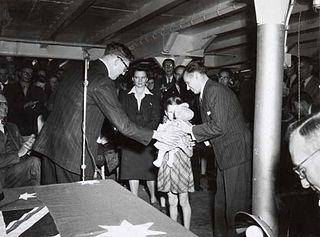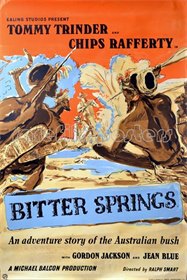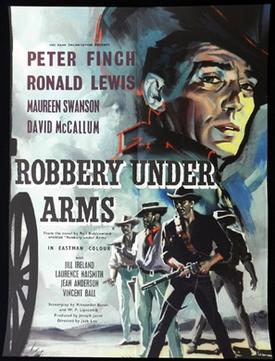Related Research Articles

Harold Edward Holt was an Australian politician and lawyer who served as the 17th prime minister of Australia from 1966 until his disappearance and presumed death in 1967. He held office as leader of the Liberal Party of Australia.

The White Australia policy was a set of racial policies that aimed to forbid people of non-European non-white ethnic origins – especially Asians and Pacific Islanders – from immigrating to Australia in order to create a "white/British" ideal focused on but not exclusively Anglo-Celtic peoples. Pre-Federation, the Australian colonies passed many anti-Chinese immigration laws mainly using Poll Taxes, with Federation in 1901 came discrimination based on the Dictation Test, which effectively gave power to immigration officials to racially discriminate without mentioning race. The policy also affected immigrants from Germany, Italy, and other European countries, especially in wartime. Governments progressively dismantled such policies between 1949 and 1973, when the Whitlam government removed the last racial elements of Australia's immigration laws.

The Wooden Horse is a 1950 British World War II war film directed by Jack Lee and starring Leo Genn, David Tomlinson and Anthony Steel. It is based on the book of the same name by Eric Williams, who also wrote the screenplay.

Displaced persons camps in post–World War II Europe were established in Germany, Austria, and Italy, primarily for refugees from Eastern Europe and for the former inmates of the Nazi German concentration camps. A "displaced persons camp" is a temporary facility for displaced persons, whether refugees or internally displaced persons. Two years after the end of World War II in Europe, some 850,000 people lived in displaced persons camps across Europe, among them Armenians, Czechoslovaks, Estonians, Greeks, Poles, Latvians, Lithuanians, Yugoslavs, Jews, Russians, Ukrainians, Hungarians, Kalmyks, and Belarusians.
The history of Jews in Australia traces the history of Australian Jews from the British settlement of Australia commencing in 1788. Though Europeans had visited Australia before 1788, there is no evidence of any Jewish sailors among the crew. The first Jews known to have come to Australia came as convicts transported to Botany Bay in 1788 aboard the First Fleet that established the first European settlement on the continent, on the site of present-day Sydney.

Uranquinty is a small town approximately 15 kilometres (9 mi) south of Wagga Wagga, in the Riverina region of New South Wales, Australia. The population of the town, often referred to as "Quinty", is 909.

Post-war immigration to Australia deals with migration to Australia in the decades immediately following World War II, and in particular refers to the predominantly European wave of immigration which occurred between 1945 and the end of the White Australia policy in 1973. In the immediate aftermath of World War II, Ben Chifley, Prime Minister of Australia (1945–1949), established the federal Department of Immigration to administer a large-scale immigration program. Chifley commissioned a report on the subject which found that Australia was in urgent need of a larger population for the purposes of defence and development and it recommended a 1% annual increase in population through increased immigration.

Our Lady of Pochayiv and St Andrew's Ukrainian Catholic Church is situated on Dalmeny Street, Leith in Edinburgh. It is one of the few Ukrainian Greek Catholic parish churches in Scotland. It is a church in the only Eastern Catholic eparchy in Great Britain, the Ukrainian Catholic Eparchy of the Holy Family of London. It is a Category B listed building.

Ukrainian Australians refers to Australian citizens of Ukrainian descent, or Ukraine-born people who emigrated to Australia. They are an ethnic minority in Australia, numbering about 38,000 people according to the 2011 Census. Currently, the main concentrations of Ukrainians are located in the cities of Sydney and Melbourne.

USS General W. M. Black (AP-135) was a General G. O. Squier-class transport ship for the U.S. Navy in World War II. The ship was crewed by the U.S. Coast Guard until decommissioning. She was named in honor of U.S. Army general William Murray Black. She was transferred to the U.S. Army as USAT General W. M. Black in 1946. On 1 March 1950 she was transferred to the Military Sea Transportation Service (MSTS) as USNS General W. M. Black (T-AP-135). She was later sold for commercial operation under the name SS Green Forest, before being scrapped in 1980.

Sir Thomas Walter White, was an Australian politician and pilot in the First World War. In 1914 he became one of the first airmen trained for the Australian Flying Corps (AFC), and the following year he was among the first AFC members to see action when he was deployed to the Middle East with the Mesopotamian Half Flight. After carrying out several missions behind Turkish lines, he was captured in November 1915 but escaped in July 1918. White was awarded the Distinguished Flying Cross and twice mentioned in despatches for his war service. He married Vera Deakin, a Red Cross worker and daughter of former Australian prime minister Alfred Deakin, in 1920.

Bitter Springs is a 1950 Australian–British film directed by Ralph Smart. An Australian pioneer family leases a piece of land from the government in the Australian outback in 1900 and hires two inexperienced British men as drovers. Problems with local Aboriginal people arise over the possession of a waterhole. Much of the film was shot on location in the Flinders Ranges in South Australia

Hungarian Australians are Australian citizens of Hungarian descent. The constant influx of Hungarian immigrants was marked by several waves. Most of the Hungarian immigrants to Australia came after World War II and after the Hungarian Revolution of 1956. Hungarian Australians mostly live in state capital cities. Responses to the 2006 ABS-conducted national census questionnaires could reflect the true numbers of Hungarian Australians only if one takes into account not only those born in Hungary. In addition to that, those of ethnic Hungarian origin born outside Hungary who officially and specifically identified themselves of Hungarian ancestry would total 67,616 Hungarian Australian persons, residents of Australia as per ABS tabulation under "Hungarian Ancestry" . The breakdown according to State and Territory was: NSW 23,577; VIC 21,727; QLD 9795; SA 5,427; WA 4,230; TAS 877; ACT 1,652; NT 331. Of the 67,616 total 20,166 or 29.82% were born in Hungary, 31,103 or 46% were aged 65 and over, 40,570 or 60% had tertiary or trade qualifications. In the same 2006 Census, among Hungarian-born persons, the religious affiliation was as follows: 72.9% declared Christianity, 11.8% declared no religion or atheism, 7.4% declared Judaism, 0.6% declared other religions and 6.6% did not answer the question.

The Bonegilla Migrant Reception and Training Centre was a camp set up for receiving and training migrants to Australia during the post World War II immigration boom. The camp was set on 130 hectares near Wodonga at the locality of Bonegilla in north east Victoria, between the Hume Dam and the city of Wodonga. The site was a former World War II Australian Army base, and is adjacent to the current Latchford Barracks. Before being requisitioned by the army, the site was originally a section of large pastoral land. The camp opened in 1947 and operated until 1971, over which period it received over 300,000 migrants. It is estimated that over 1.5 million Australians are descended from migrants who spent time at Bonegilla. Eric Bana's parents were both processed through Bonegilla. The grandfather of actor and screenwriter Jason Agius stayed at the camp in 1952. Other former residents include Karl Kruszelnicki, Franca Arena, Arvi Parbo, Les Murray, Susan Duncan, Pi O and Raimond Gaita.

Robbery Under Arms is a 1957 British crime film directed by Jack Lee and starring Peter Finch and Ronald Lewis. It is based on the 1888 Australian novel Robbery Under Arms by Thomas Alexander Browne who wrote under the pseudonym Rolf Boldrewood.

Michael Kmit was a Ukrainian painter who spent twenty-five years in Australia. He is notable for introducing a neo-Byzantine style of painting to Australia, and winning a number of major Australian art prizes including the Blake Prize (1952) and the Sulman Prize. In 1969 the Australian artist and art critic James Gleeson described Kmit as "one of the most sumptuous colourists of our time".
New Australians were non-British migrants to Australia who arrived in the wave of immigration following World War II. The term initially referred to newly arrived immigrants, generally refugees, who were expected to eventually become mainstream Australians. It was coined by Arthur Calwell, Australia's first Minister for Immigration, to promote the assimilation of migrants to Australia from continental Europe. Its use was intended to be positive, and to discourage use of pejorative terms such as "reffo" or "Balt" that were then in frequent use. The term has fallen into disuse since the 1970s.

The Displaced Persons Act of 1948 authorized, for a limited period of time, the admission into the United States of 200,000 certain European displaced persons (DPs) for permanent residence.

A Boy, a Girl and a Bike is a 1949 British romantic comedy film directed by Ralph Smart and starring John McCallum, Honor Blackman and Patrick Holt, with art direction by George Provis. The film is set in Wakeford and in the Yorkshire Dales. It features cycle sabotage and cycling tactics.

Lorenzo Abrogar Gamboa was a Filipino-American man who was excluded from Australia under the White Australia policy, despite having an Australian wife and children. His treatment sparked an international incident with the Philippines.
References
- 1 2 3 Andrew Pike and Ross Cooper, Australian Film 1900–1977: A Guide to Feature Film Production, Melbourne: Oxford University Press, 1998, p212.
- ↑ "Mike and Stefani (R. Maslyn Williams, 1952) – Senses of Cinema".
- ↑ "Transcripts". Archived from the original on 9 December 2013. Retrieved 9 December 2013.
- ↑ "Public can't see D.P. film yet". The Argus . Melbourne: National Library of Australia. 22 November 1951. p. 6. Retrieved 25 August 2012.
- ↑ "Government Film Wins Prize". The Sydney Morning Herald . National Library of Australia. 21 January 1952. p. 3. Retrieved 25 August 2012.
- ↑ "Film Finds A Theatre". The Sydney Morning Herald . National Library of Australia. 15 October 1953. p. 2. Retrieved 25 August 2012.
- ↑ Mike and Stefani. National Film and Sound Archive of Australia. 2011. Archived from the original on 2 March 2016.